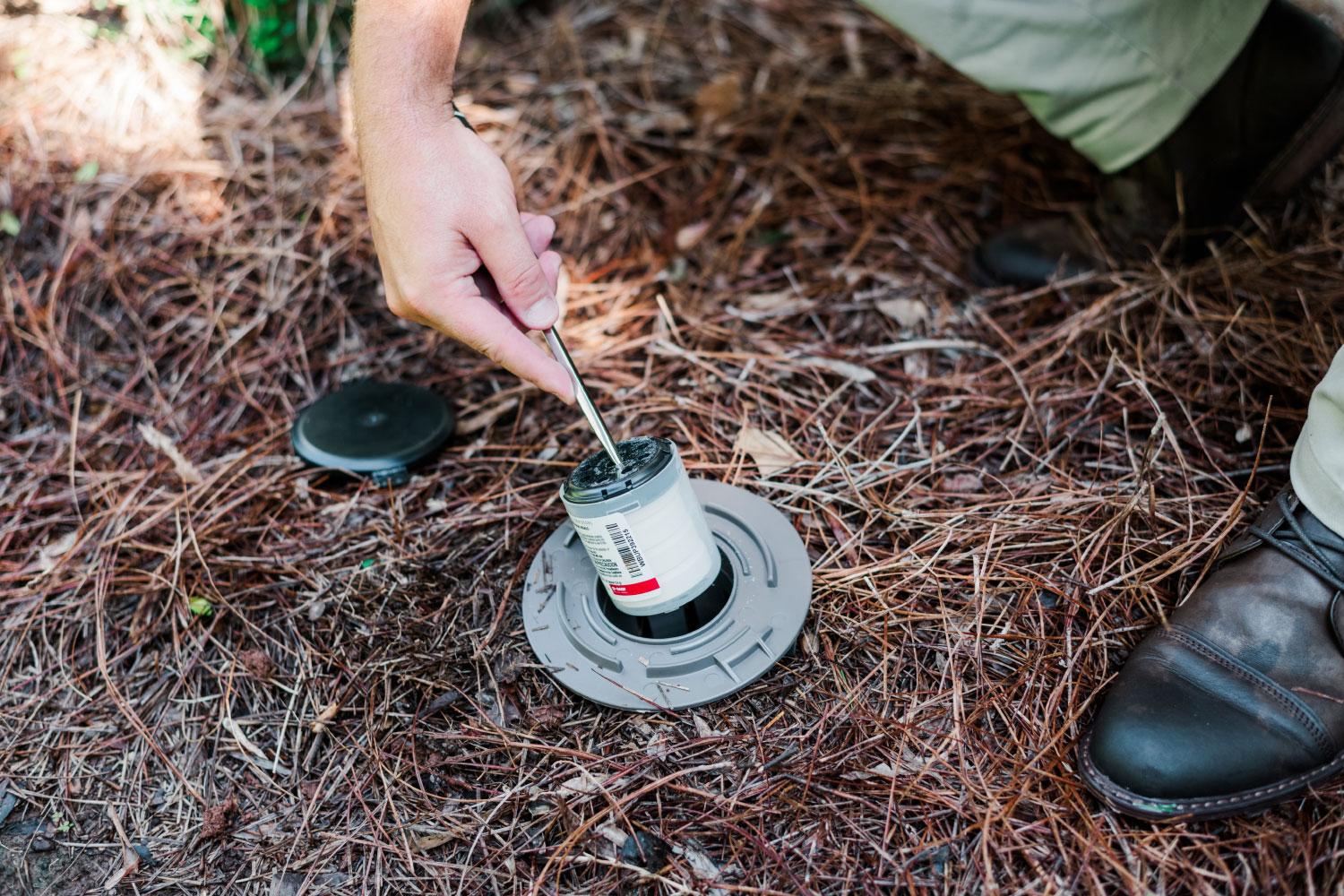Springtime brings green grass, new flowers, leaves on trees, kids playing outside, and… flying termites? You read that correctly. Termites that fly–or termite swarms. For a homeowner, this probably reads like some kind of horrific plague, but it’s quite real. Let’s talk about why termites swarm, when they swarm, and what you should do to protect your property from termite swarms.
Why Do Termites Swarm?
Once a year, when colonies reach a threshold and weather conditions are optimal, they produce flying males and females called alates. Their function is to disembark from the colony, pair off with a mate from another colony nearby, and find a location to establish a new population. This could result in a swarm near or even inside your home. Interior swarms can indicate the presence of an active structural colony.
Termites desire to be outside. For that reason, they are attracted to light and often spotted near windows, large doors, and even light fixtures. Cracks between doors and doorframes, windows, structural imperfections, or even cracks in the foundation of your home offer alates exit points to escape your home and search for a fresh location to establish a colony.
When Do Termites Swarm?
Narrowing down an exact time is impossible, but factors such as species, temperature, and even moisture influence when a swarm may occur. In Atlanta, we most commonly see large swarms from subterranean termites over the course of a few days. They typically swarm:
- during the daylight hours of warm spring days
- once the temperature average reaches 70 degrees
- and generally on a calm day after a rain event.
Each of these factors contributes to the hopeful success of the swarm. Insects are small, don’t produce internal heat, and are dependent on warm, ambient air temperatures. Humidity defers the threat of dehydration and mortality temporarily, and moist soils provide the best chance for a mating pair to establish a new colony. Lastly, low wind speeds are important because alates aren’t great flyers.
Even with this knowledge, every year presents unique seasonal transitions and weather events, and each property has mild differences in microclimates which may influence swarm timing.
What Should I Do If Termites Swarm?
If you notice a swarm or find deceased termites or their wings near sources of light, it’s time to take action. Give us a call at Nature’s Turf so one of our pest professionals can help. Often, this is the first instance people encounter the termites in or around their home. The swarm itself won’t last long, and alates can’t harm you, but their presence means a large colony is existent somewhere near or within the structure of your home.
It’s imperative to have a structural inspection done to find the colony and source of these alates. Termites can do exceptional damage, and their destructive potential only increases as their colony spreads and reproduces. A Nature’sTurf pest professional will identify their location and eradicate the colony with bait stations and quarterly inspections, minimizing the potential for a repeat offense.
Important Takeaways:
- Swarming termites are called alates. They are males and females with wings created for the purpose of reproducing and creating new colonies.
- Swarms in Atlanta typically occur in spring as the average afternoon temperatures reach 70 degrees fahrenheit.
- While they don’t last long and aren’t harmful, swarms are an indication of an active colony nearby at threshold.
- If you encounter a swarm or deceased alates, it’s important to contact a trusted pest professional to do a structural inspection, establish monitoring in the form of bait stations, and help advise remediation techniques.








